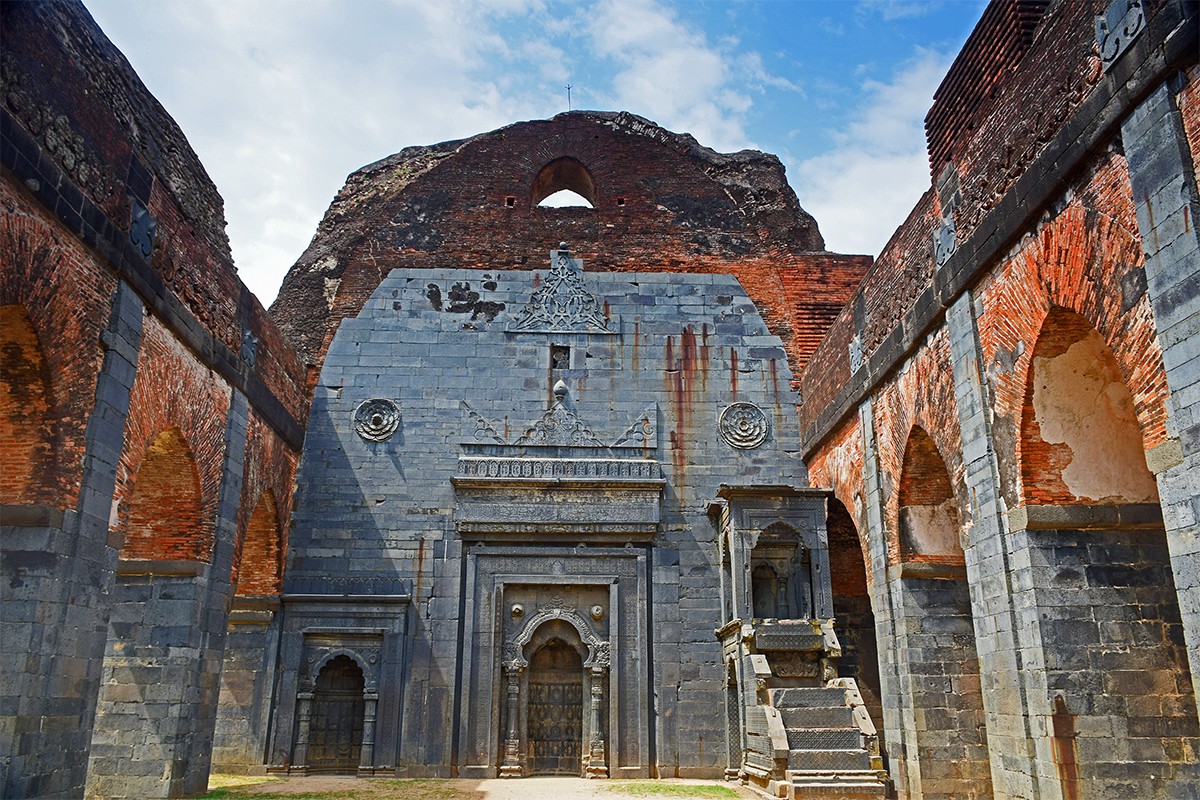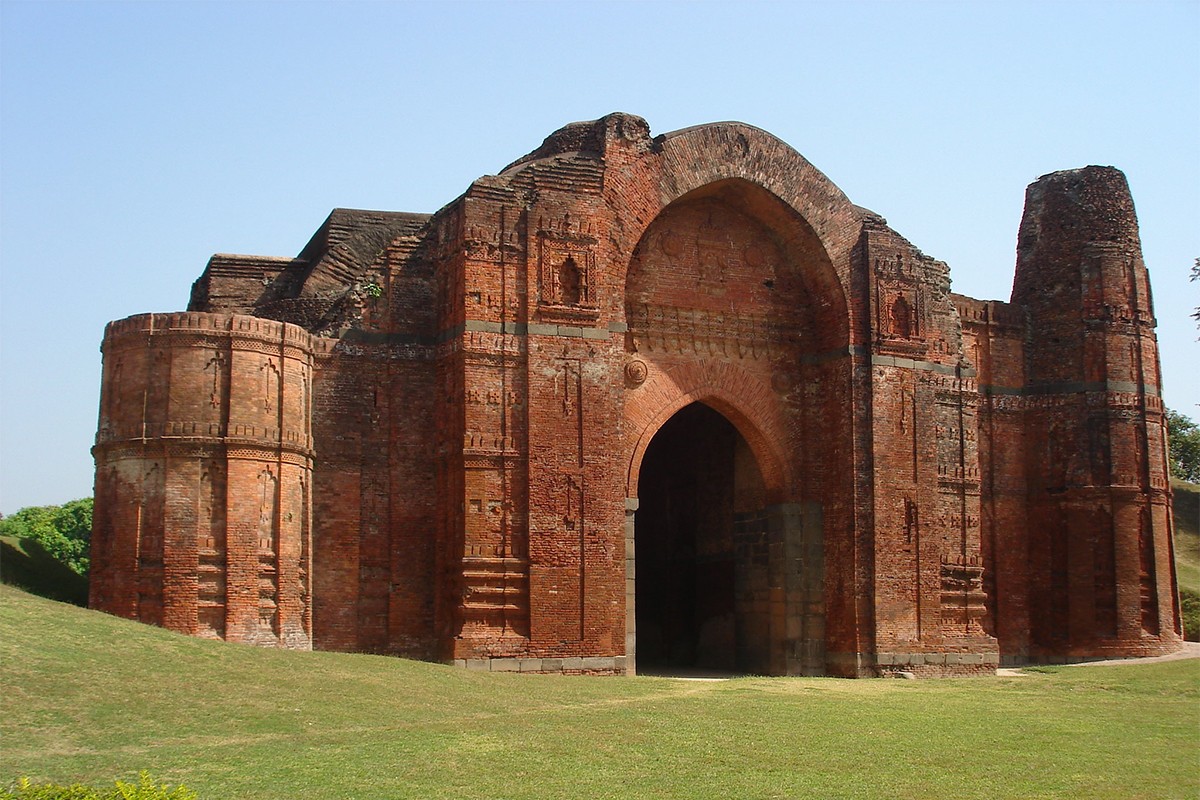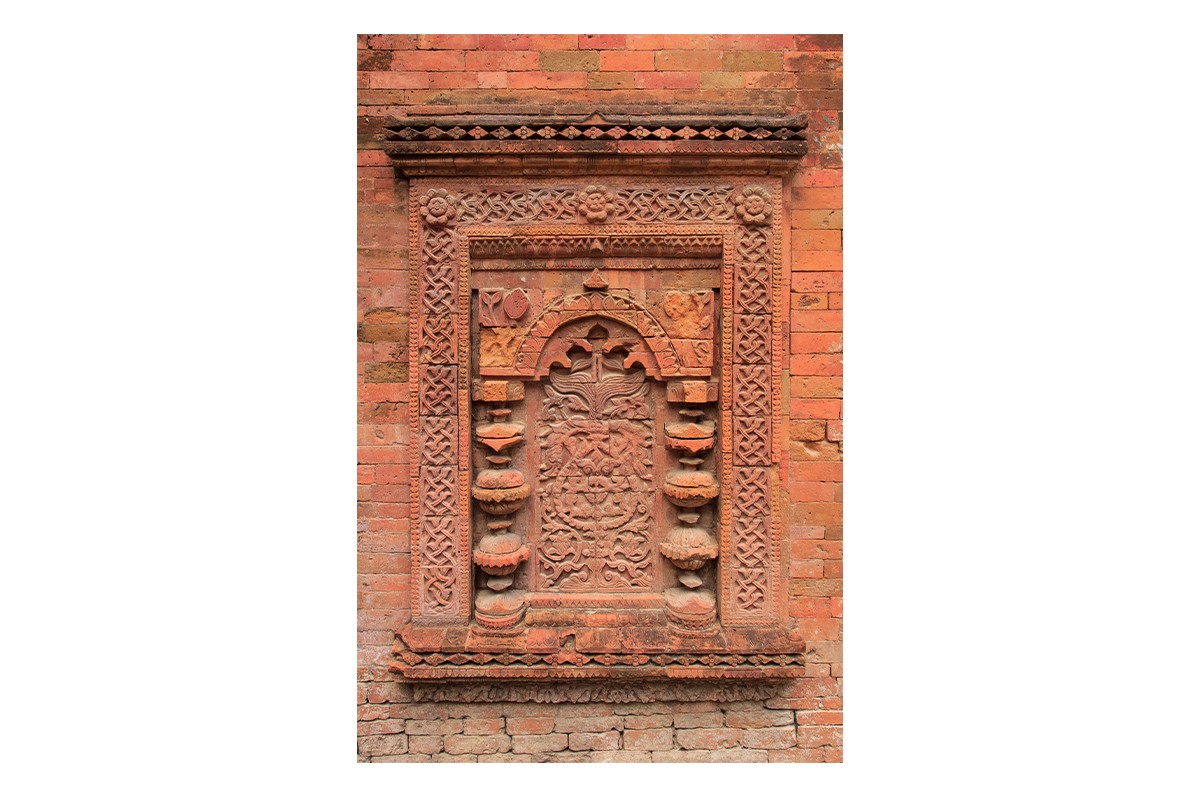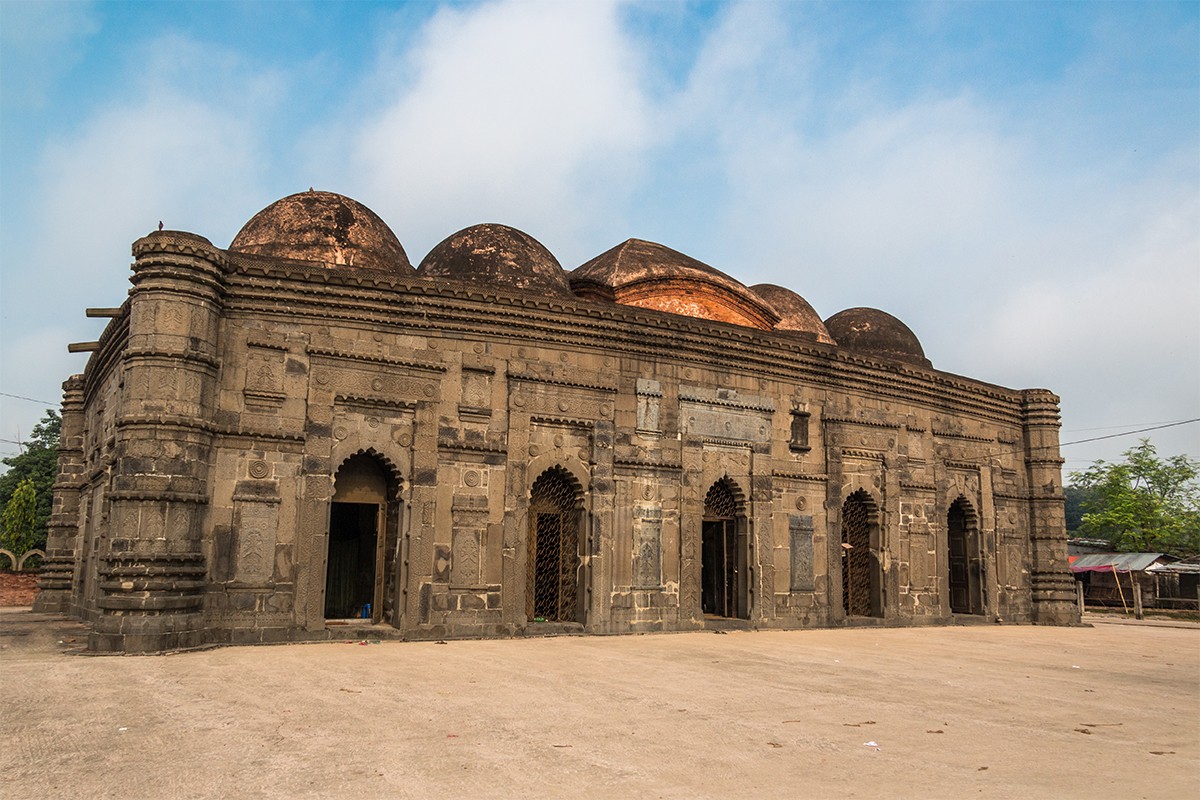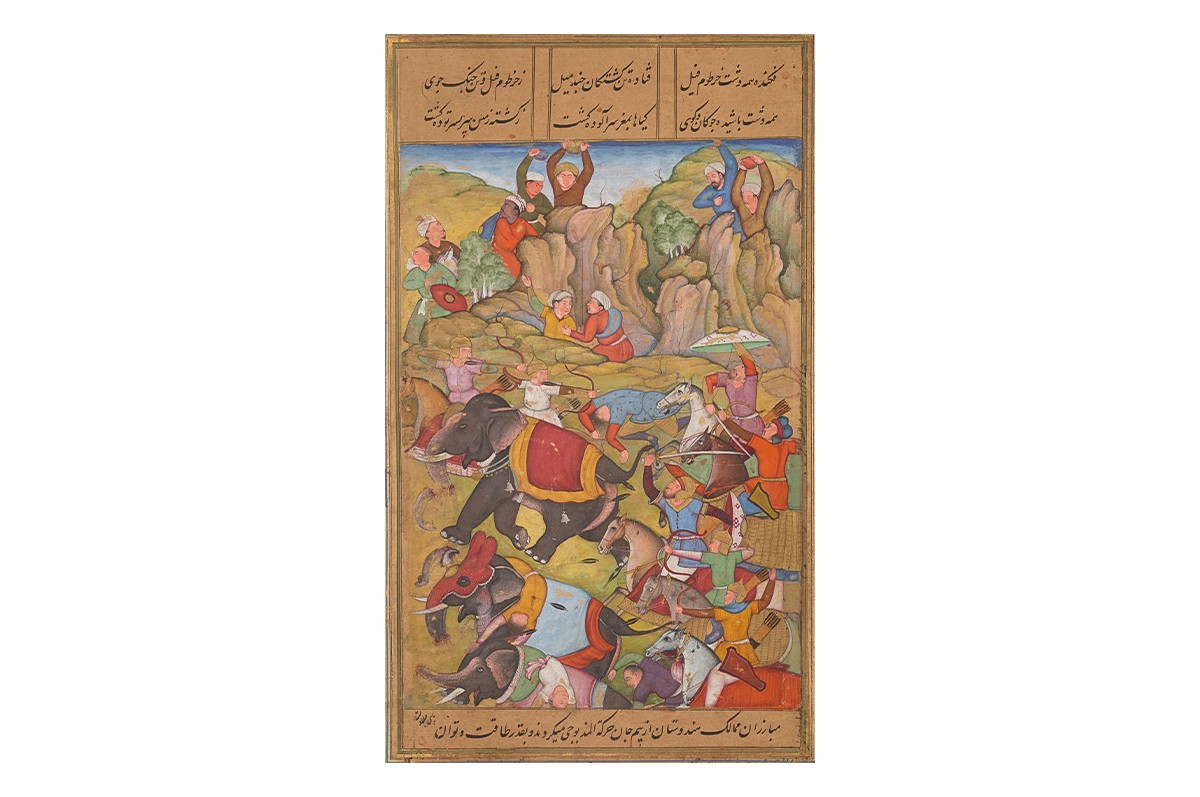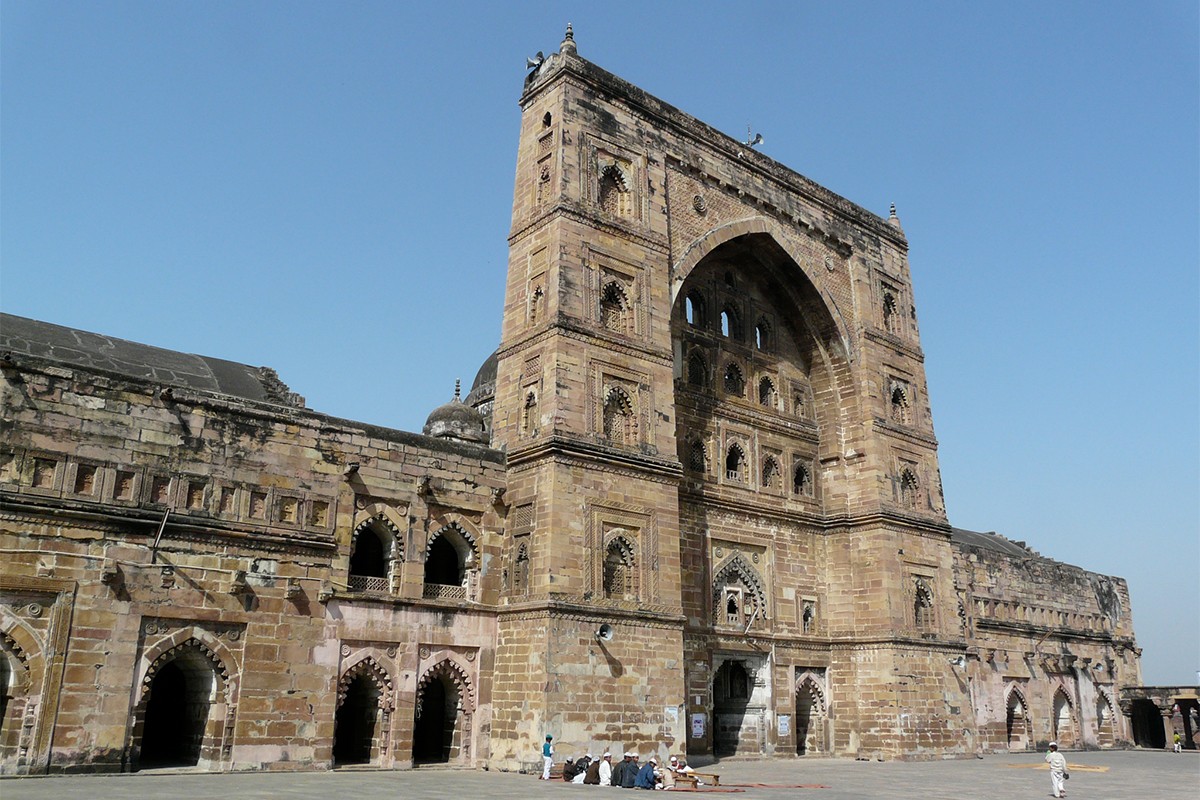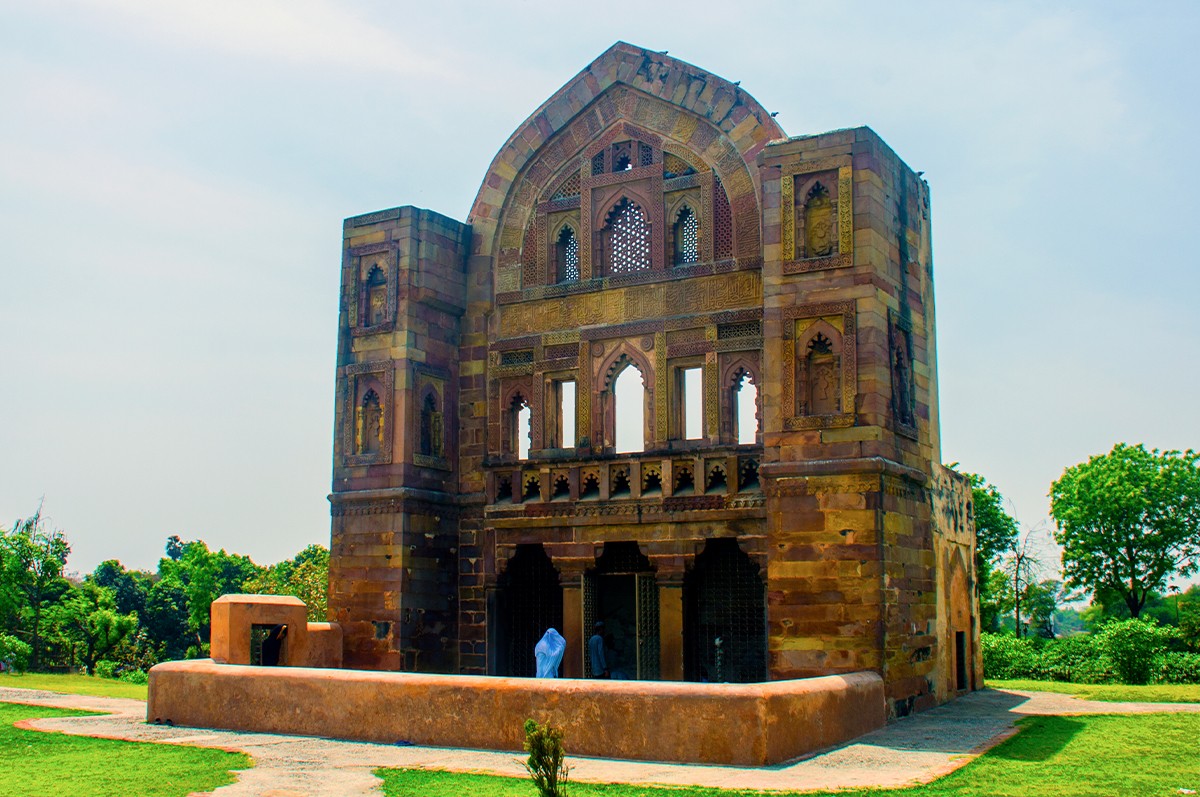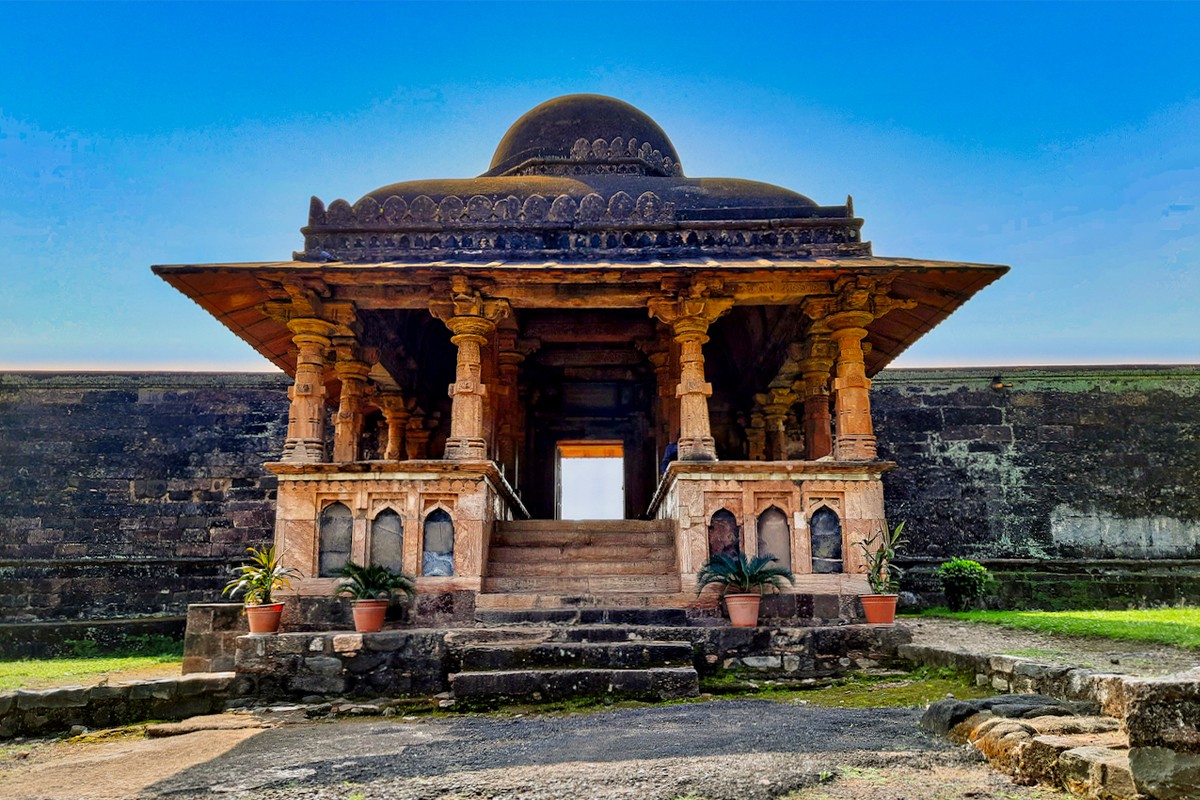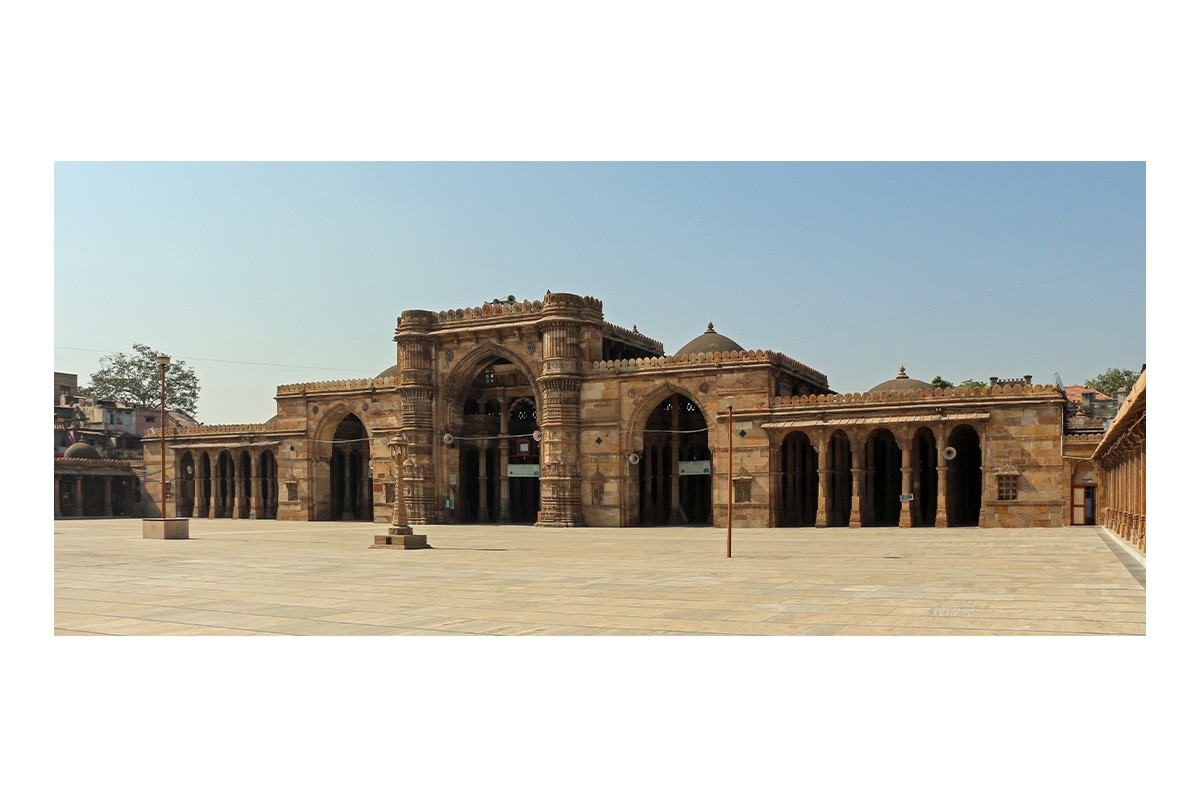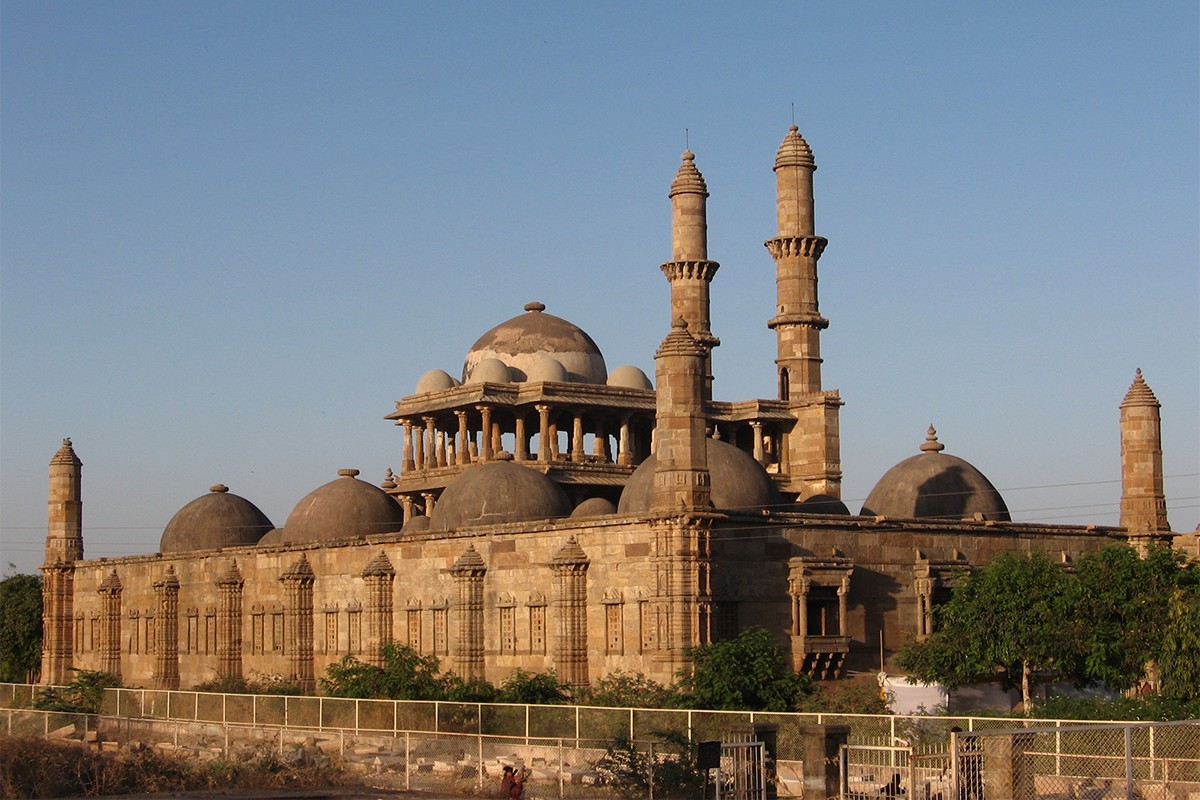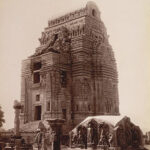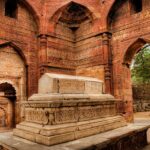New Sultanates Emerge in Northern India
1350–1500
The weakening of the Delhi Sultanate sets the stage for the splintering of its territory into newer sovereign kingdoms in the early years of the fifteenth century. The Bengal Sultanate is established in the 1330s after repeated failed attempts by the Delhi Sultanate to keep the territory in its fold. Other regional sultanates, ruled by erstwhile Tughlaq governors, declare independence after Timur’s raid on Delhi in 1398–99. Jaunpur, Gujarat and Malwa emerge as important sovereign sultanates, leading to the flourishing of distinct art and architectural traditions in each region.
In terms of architecture, the Bengal Sultanate comes to be known for its gradual incorporation of local building materials, motifs inspired by the earlier Pala-Sena eras and local architecture, and terracotta ornamentation. In kingdoms in present-day Gujarat and Malwa, the reuse of elements of earlier temples is a key characteristic of early sultanate architecture, while in Jaunpur (in present-day Uttar Pradesh), a style known as Sharqi architecture is characterised by the adaptation of Tughlaq military architecture for mosque design and the use of the arched pylon in the facade, unique to Jaunpur among the sultanates. Architectural motifs in Jaunpur are inspired by Central Asian designs and Western Indian textiles.
Bibliography
BBurton-Page, John. Indian Islamic Architecture: Forms and Typologies, Sites and Monuments. Leiden: Brill, 2007.
Dehejia, Vidya. Indian Art. New York: Phaidon Press, 2012.
Hasan, Perween. Sultans and Mosques: The Early Muslim Architecture of Bangladesh. London: Bloomsbury Academic, 2007.
Feedback 
This entry appears in
Art in South Asia
Visit Timeline
Associated Timeline Events
First Published: March 11, 2024
Last Updated: August 17, 2024



